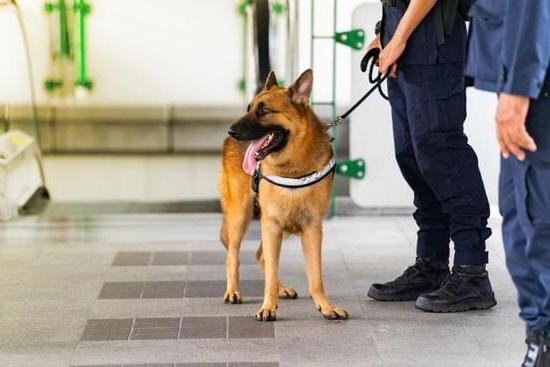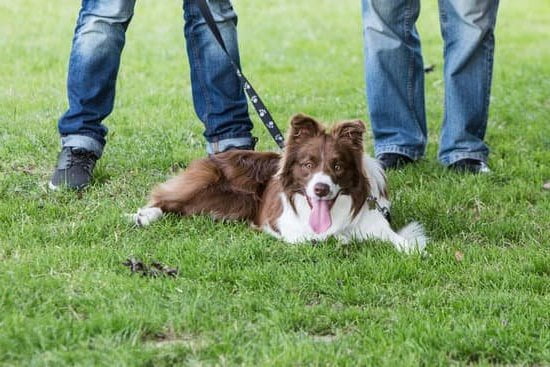Crate training is an important and beneficial aspect of raising a well-behaved and happy pup. In this guide, we will explore the ins and outs of crate training, including how to choose the right crate, preparing it for your dog, and gradually introducing them to this new space. By the end of this article, you’ll have the tools and knowledge to successfully crate train your furry friend.
Crate training can be a useful tool in helping your dog feel secure and comfortable in their own space while also aiding in housebreaking and preventing destructive behavior. In this comprehensive guide, we will cover everything you need to know about crate training, from choosing the perfect crate for your dog’s needs to handling common challenges like separation anxiety.
We’ll start by exploring the purpose and benefits of crate training, then move on to practical tips for choosing the right crate, preparing it for your dog’s comfort, and introducing them to this new environment in a positive way. Additionally, we’ll discuss feeding and watering routines in the crate, best practices for successful crate training, and how to handle potential challenges like separation anxiety.
Whether you’re a first-time pet parent or looking to improve your current methods, this guide will provide valuable insights into effective crate training techniques.
Choosing the Right Crate
When it comes to crate training your dog, choosing the right crate is crucial for their comfort and success in the training process. The size of the crate is important as it should be big enough for your dog to stand up, turn around, and lie down comfortably.
If the crate is too big, your dog may not feel secure, but if it’s too small, they will be uncomfortable. Measure your dog from the tip of their nose to the base of their tail and add a few inches to determine the proper length of the crate.
The material of the crate is also an important factor to consider. There are different options such as wire crates, plastic crates, and soft-sided crates. Wire crates are often collapsible and provide good ventilation, while plastic crates offer more privacy and a den-like environment for your dog. Soft-sided crates are lightweight and portable, but may not be suitable for dogs who like to chew or scratch.
In addition to size and material, the location of the crate in your home is also crucial. The crate should be placed in a quiet area where your dog can have some peace and privacy. Avoid placing the crate next to loud appliances or in areas with high foot traffic. It’s also important to make sure that the crate is not exposed to direct sunlight or drafts that could make your dog uncomfortable.
- When choosing a crate for your dog:
- Measure your dog’s size for proper fit
- Consider different materials such as wire, plastic, or soft-sided
- Choose a quiet location for the crate in your home
Overall, taking these factors into consideration when choosing a crate will help set your dog up for success in their training process and ensure their comfort while using it.
Preparing the Crate for Your Dog
When it comes to crate training a dog, it’s important to create a space that is comfortable and familiar for your furry friend. By taking the time to prepare the crate properly, you can help your dog feel more at ease and make the training process much smoother.
Choosing the Right Bedding
One of the first steps in preparing the crate for your dog is choosing the right bedding. Look for a soft, comfortable bed or blanket that fits snuggly within the crate. Avoid using anything with stuffing or filling that could be a choking hazard if your dog decides to chew on it.
Adding Familiar Scents
Dogs rely heavily on their sense of smell, so adding familiar scents to the crate can help them feel more at home. Consider placing an item of clothing with your scent on it in the crate, as well as any toys or blankets that your dog is already familiar with.
Making It Cozy
You want your dog to view their crate as a safe and cozy den, so consider adding some comforting elements such as a cover or curtain to make it feel more enclosed. It’s important not to make it too dark or stuffy, however, as this can be uncomfortable for your pet.
By taking these steps to add comfort and familiarity to your dog’s crate, you can help them feel more at ease during training and create a positive association with their new space.
Introducing Your Dog to the Crate
Introducing your dog to a crate can be an important step in their training and overall well-being. It’s essential to approach this process with patience and positive reinforcement to ensure that your dog sees the crate as a safe and comfortable space. Here’s how to properly introduce your dog to the crate, ensuring a positive association and gradual acclimation.
Positive Association
When introducing your dog to the crate, it’s crucial to create a positive association with the space. Start by placing treats or toys near the crate, allowing your dog to explore the area at their own pace. Once they show curiosity or interest in the crate, place treats inside so that they begin associating the crate with positive experiences. This will help them feel more comfortable and willing to enter on their own.
Gradual Acclimation
It’s important not to rush the process of crate training. Gradually acclimate your dog to spending time inside the crate by starting with short periods of time, such as 5-10 minutes, while you are still present in the room.
As they become more comfortable, gradually increase the duration while also leaving them alone for short periods. This gradual approach will help prevent any fear or anxiety associated with being confined, ultimately leading to a more positive experience for your dog.
Consistency Is Key
Consistency is key when introducing your dog how to crate train a dog. Be consistent in using positive reinforcement, such as praise and treats, whenever your dog willingly enters the crate. Additionally, maintain consistency in the routine of introducing them to the crate at specific times throughout the day, such as after meals or before bedtime. By establishing a consistent routine and using positive reinforcement techniques, you can effectively help your dog develop a positive association with their crate.
Feeding and Watering in the Crate
One of the key aspects of crate training a dog is establishing a routine for feeding and watering. This routine not only helps with potty training, but it also creates a sense of security and predictability for your dog. Here’s how to create train a dog to eat and drink in their crate.
First, it’s important to establish regular mealtimes for your dog. This means feeding them at the same time each day and removing any uneaten food after a certain period of time. By doing this, you can start to predict when your dog will need to go outside to relieve themselves, which is an essential part of crate training.
When it comes to water, it’s best to monitor your dog’s intake and take their water bowl away a few hours before bedtime. This can help prevent accidents during the night while also getting them into the routine of drinking at specific times throughout the day. It’s also important to make sure that your dog has access to fresh water when they are not in their crate.
By establishing a routine for feeding and watering in the crate, you can help your dog adjust to being in their crate for periods of time without feeling stressed or anxious. It also helps with teaching bladder control and aids in potty training. Consistency is key when it comes to creating this routine, so be patient as your dog learns and adapts.
| Aspect | Recommendation |
|---|---|
| Feeding | Establish regular mealtimes |
| Watering | Monitor intake, remove water before bedtime, provide fresh water outside the crate |
| Routine | Consistency is key in establishing this routine for feeding and watering in the crate. |
Crate Training Do’s and Don’ts
When it comes to crate training your dog, there are certain do’s and don’ts that can make a significant impact on the success of the training process. One common mistake to avoid is using the crate as a form of punishment.
The crate should be viewed by your dog as a safe and comfortable space, not as a place for isolation or discipline. Using the crate in this way can create negative associations and lead to resistance from your dog.
Another important aspect of crate training is ensuring that you do not leave your dog in the crate for extended periods of time. While the crate can be a useful tool for managing your dog’s behavior and providing them with a secure environment, it should not be used as a substitute for regular exercise, mental stimulation, and human interaction. Additionally, leaving your dog in the crate for too long can lead to feelings of anxiety and distress.
It is crucial to avoid forcing your dog into the crate or using physical force to make them stay inside. This approach can cause fear and reluctance towards entering the crate, making it counterproductive to the training process.
Instead, focus on creating positive associations with the crate by using treats, toys, and praise to encourage your dog to voluntarily enter and spend time in their designated space. By understanding these common mistakes and following best practices on how to crate train a dog, you can set your furry friend up for success in their transition to being comfortable in their new home within their crate.
Handling Separation Anxiety
One of the challenges of crate training a dog is dealing with separation anxiety. Many dogs experience anxiety when their owners leave, which can lead to destructive behavior and excessive barking. However, when used properly, the crate can actually help alleviate separation anxiety in dogs. The key is to make the crate a safe and comfortable space for your furry friend.
To start, it’s important to associate the crate with positive experiences. Leave the door open and place some of your dog’s favorite toys or treats inside. You can also feed your dog near or even inside the crate to create positive associations. It’s essential that you never use the crate as a form of punishment, as this will only exacerbate any existing anxiety issues.
Once your dog starts feeling comfortable in the crate, you can begin leaving them alone for short periods of time. Start by stepping out of sight for just a few seconds and gradually increase the duration as your dog becomes more at ease with being alone in the crate. Remember to always reward calm behavior and never make a big fuss when leaving or returning home.
Using the crate as a safe space can significantly reduce separation anxiety in dogs. By making sure the crate is associated with positive experiences and gradually getting your dog used to being alone, you can help them feel more secure when left by themselves. With patience and consistency, you’ll soon find that your dog willingly enters their crate whenever they need some downtime.
| Aspect | Description |
|---|---|
| Positive Association | Associate the crate with positive experiences using toys and treats. |
| Gradual Alone Time | Start by leaving your dog alone for short periods and slowly increase duration. |
| Patient Consistency |
Gradual Graduation
In conclusion, crate training a dog can be a highly effective tool in promoting good behavior and providing a safe space for your pet. By understanding the purpose and benefits of crate training, choosing the right crate, preparing it for your dog, and gradually introducing them to it, you can create a positive association with the crate. Using the crate for feeding, watering, and handling separation anxiety can also contribute to successful training.
It is important to remember that consistency and patience are key when crate training a dog. Avoiding common mistakes such as using the crate as punishment or leaving your dog in it for extended periods of time can help build trust between you and your pet. Gradually transitioning from the crate to freedom in the home is also an important part of the process, allowing your dog to demonstrate good behavior outside of the crate.
Overall, knowing how to properly crate train a dog is crucial for both their well-being and your peace of mind. With the right approach and understanding of your pet’s needs, you can successfully use the crate as a valuable tool in raising a well-behaved and happy canine companion.
Frequently Asked Questions
How Long Does It Take to Crate Train a Dog?
The time it takes to crate train a dog can vary depending on the dog’s age, temperament, and past experiences with crates. Some dogs may learn to be comfortable in a crate within a few days, while others may need several weeks of consistent training.
What Age Is Too Late to Crate Train a Dog?
It is not necessarily too late to crate train a dog at any specific age, but it may be more challenging with older dogs who have developed habits or fears related to confinement. With patience and positive reinforcement, even older dogs can learn to be comfortable in a crate.
How Do I Get My Puppy to Stop Whining in His Crate?
To help a puppy stop whining in their crate, it’s important to first make sure that all of their physical needs are met before crating them – this includes bathroom breaks, exercise, and mental stimulation. Additionally, using positive reinforcement and gradual desensitization can help the puppy become more comfortable in their crate over time.

Welcome to the blog! I am a professional dog trainer and have been working with dogs for many years. In this blog, I will be discussing various topics related to dog training, including tips, tricks, and advice. I hope you find this information helpful and informative. Thanks for reading!





